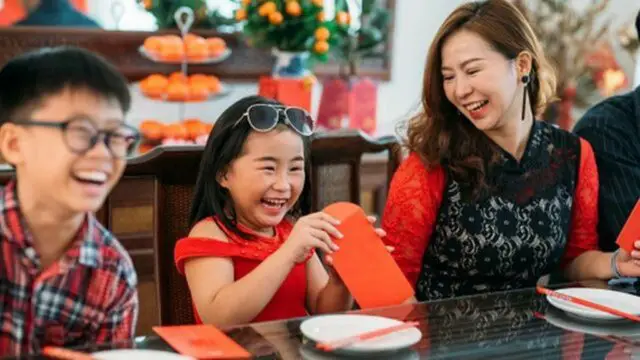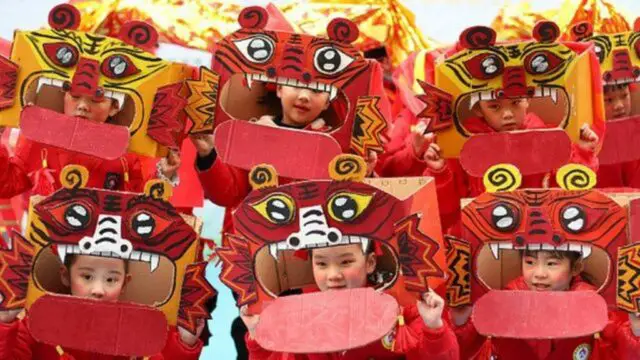It is the most important day of the Chinese calendar: more than 1,000 million people will celebrate together with their relatives; they will see parades and pray for good fortune in the next year. It is the Chinese New Year that, in 2022, starts on February 1st.
What happens during the Chinese New Year?
The Chinese New Year (also known as Lunar New Year) begins with the departure of the second new moon after the winter solstice (December 21st). This can occur at any date between January 21st and February 20th.
Also known as the Spring Festival, Chinese communities celebrate the New Year around the world. The festivities dismiss the old year and are destined to bring luck and prosperity in the new one.
There are family banquets and outdoor shows with firecrackers, fireworks and, often, dancing dragons. The main celebrations are held on New Year’s Eve and New Year’s Day. Millions of people will travel through China, sometimes thousands of kilometers, to celebrate with their families.
Chinese family celebrating the New Year
People decorate their homes with red for good luck and children receive money on bright red envelopes. The celebrations last 2 weeks and end on February 15th of this year with the Festival of Laroles, which marks the full moon.

Since the 1990s, people in China have a week free for the New Year. According to the Ministry of Commerce of the country, people today spend more than 820 billion yuan (about US$ 130,000 million) in purchases and meals during this period.
‘Year of the Tiger’
Each year is associated with one of the 12 animals of the Chinese zodiac. This is the year of the tiger. It is said that children born in this year will be brave, competitive and strong.
Children disguised for the Chinese New Year

In Mandarin, the official language in China, people say “XinNianKuai Le” (新年快乐), which means, simply, “Happy New Year”. However, in Cantonese, the main language of South China and Hong Kong, the New Year’s greeting is “Gong Hei Fat Choy” (恭喜發財), which means “I wish you prosperity”.
What are the origins of the Chinese New Year?
It is believed that the Chinese New Year goes back to the XIV century B.C., when it ruled the Shang dynasty. Its origins are impregnated with legend. A story says that a monster called Nian (“Year”) attacked villages’ populations at the beginning of each year. Nian was afraid of strong noises, bright lights and red color; people used these things to scare away the beast.
Since the dragon is a Chinese symbol of power and good fortune, Dragon dances are held in many regions of the country, during which a long and colorful dragon puppet parades through the streets, as the culminating event of the festivities. The New Year is also the time when people clean their homes thoroughly to get rid of the bad luck that has been left of the previous year.
What other countries celebrate this moment?
In all East Asia, countries will also celebrate a new year according to the same lunar calendar. In Vietnam, that day is called TếtNguyênđán, or Tết, which means Festival of the first morning of the first day. People clean their houses and decorate them with fresh flowers, such as peach flowers and kumquats. The pink of the peach flower represents energy and the kumquat represents prosperity.
In North Korea and South Korea, the Seollal is celebrated, which lasts 3 days. Korean families serve food to ancestors at a ritual named Charye, to get their blessings for next year. In South Korea, canned meat has become a favorite New Year gift, and people pay up to US$ 75 for baskets from this gift.
In Mongolia, the festival is called TsagaanSar. Some there are called the ‘white moon’ festival. People offer their prayers on altars or sanctuaries made with stones batteries. They also exchange rapé bottles, which is believed to join people.
How is the Chinese New Year celebrated in the rest of the world?
New York celebrates a ceremony of pyrotechnic games, in which they will exploit some 600,000 of these artifacts in Sara D. Roosevelt Park. After that, there will be lions and parades for the streets of Chinatown.
Singapore organizes a street parade named Chingay, which presents floats, colorful costumes, live performances and fireworks.
Manchester is home to one of the largest and older Chinese communities in the United Kingdom. In New Year, his 53-meter long dragon parades through the streets towards the Chinatown of the city.
In Latin America, cities such as Buenos Aires, Havana or Mexico City, among many others, also have their own activities and celebrations for Mark the beginning of the Chinese New Year.

